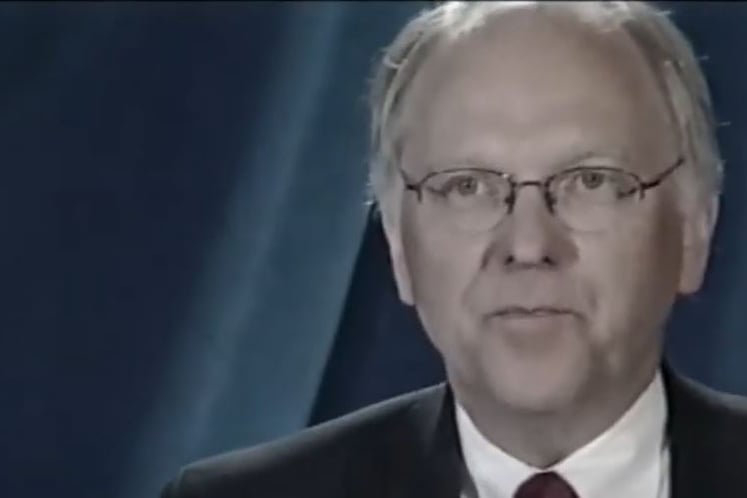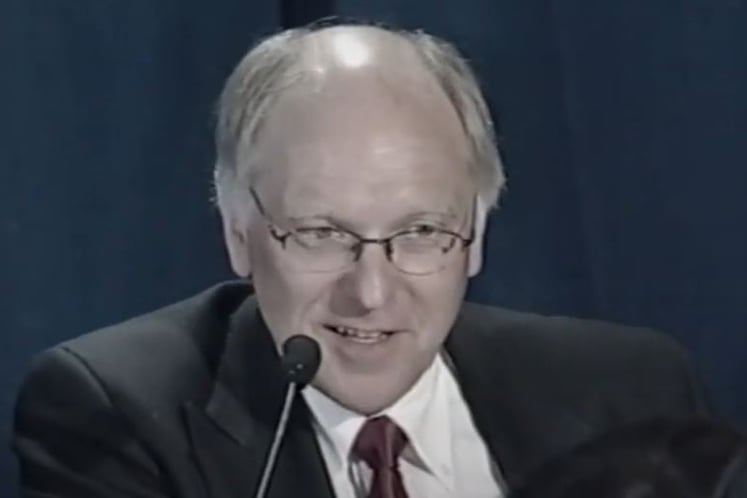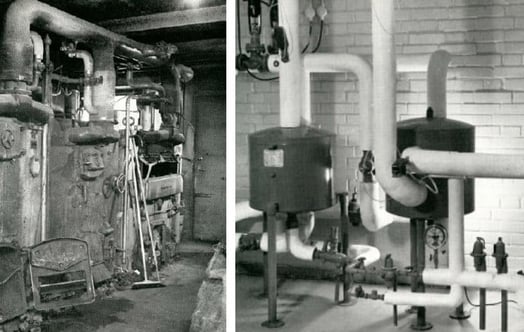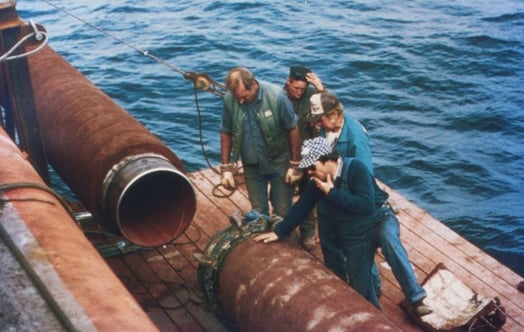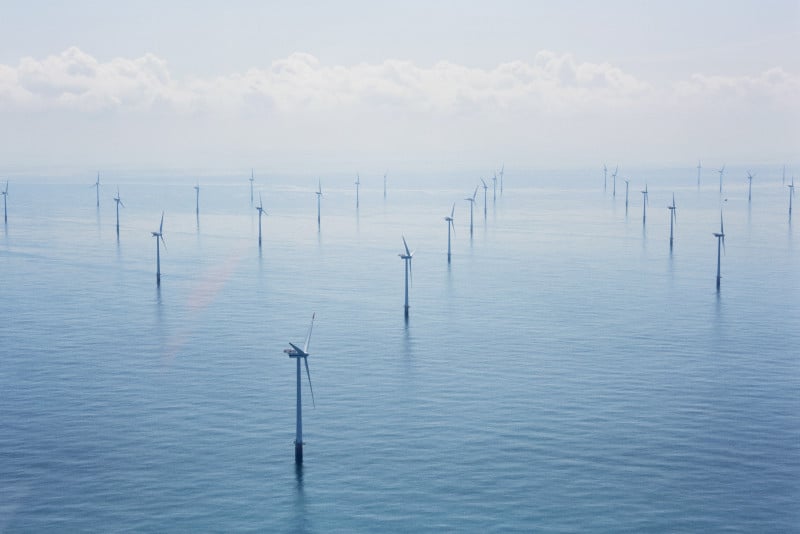
Vattenfall's investments 2000–2016. From fossil fuel to wind
In the early 2000s, clear signals were being received from political quarters that renewable energy was on the agenda. However, it took time for Vattenfall to shift from investment plans dominated by fossil power to a situation where renewable energy, and in particular wind power, monopolises the bulk of investments available for growth.
Vattenfall started investing in electricity generation in the early 20th century with the three major pioneering plants, Olidan in Trollhättan, as well as Porjus and Älvkarleby. The rate of investment subsequently fell until the late 1930s when an extensive expansion of hydro power commenced. When that abated in the 1970s, nuclear power had emerged as the predominant expansion of electricity generation. This era lasted from 1969 to 1985. When it was over, Vattenfall had plenty of electricity generation at the same time as electricity consumption no longer grew. The focus was then no longer on the development of power plants in the Nordic region, but rather the plans were concentrated on international expansion.
The early 2000s: Major acquisitions – a small number of new electricity generation plants
Vattenfall's expansion in Germany in 2000 was a major step. The issue was being able to pay for the acquisitions of the power companies HEW in Hamburg, BEWAG in Berlin and VEAG/Laubag in the Lausitz region. Internal cost controls were tightened when the acquisitions had to be consolidated. There was simultaneously an insight in the company that both the Kyoto Agreement on limiting emissions of greenhouse gases, and subsidies for renewable energy would have an increasing impact on the energy industry. There was also an internal vision, established as far back as 1996, that the long-term objective was that Vattenfall would have to transition to a sustainable energy system. However, in the early 2000s the predominant task was to integrate the major acquisitions, and investments in renewable electricity generation had to wait.
When the electricity certificate system was introduced in Sweden in 2003, Vattenfall was not generating many kilowatt hours of wind energy. Admittedly, since the 1980s the company had been investing substantially in developing wind power, but the total amount of electricity derived from wind was very limited, 0.054 TWh in 2005. As recently as 2008 it was still less than 1 per cent of the company's electricity generation. However, with the arrival of the electricity certificate system, it became important to increase the rate.
New investments in new electricity generation
New articles of association were approved at the Annual General Meeting in March 2005. Vattenfall was now to be the leading company in the transition to a sustainable Swedish energy supply. In an attempt to meet the owner's requirements, a first major step was taken in the wind power area in October 2005 with the decision to construct the offshore wind farm Lillgrund in the Öresund Sound. The facility was Europe's largest offshore wind farm, 110 MW, when it was put into operation in 2007. Within hydro power, the company also did its best through replacing existing turbine wheels from the 1940s and 50s with more effective models in connection with renewal of units, thereby increasing efficiency and thus creating new renewable electricity.

Lillgrund wind farm located between Malmö and Copenhagen. The 48 turbines have a capacity of 2.3 MW each. The 115-metre high wind turbines and the round transformer station in Lillgrund are located about 10 km off the coast. Year: 2018 | Place: - | Creator: Hans Blomberg | ID: VF300014
At the same time, Vattenfall determined that coal and nuclear power would play a major role in future energy supply. There was also a general belief in the energy industry that many fossil-based power plants in Europe would soon reach retirement age and that demand for electricity would continue to increase. New coal-fired plants were consequently needed. In the light of this, in 2006 Vattenfall decided to make substantial investments in fossil energy. In Hamburg, the hard coal-fired Moorburg plant was built with an output of 1,640 MW and at a cost of SEK 16 billion. It was to reach 29 billion before it was ready to be put into operation in 2015. A new 675 MW unit was approved for the Boxberg lignite plant with a price tag of SEK 7 billion.
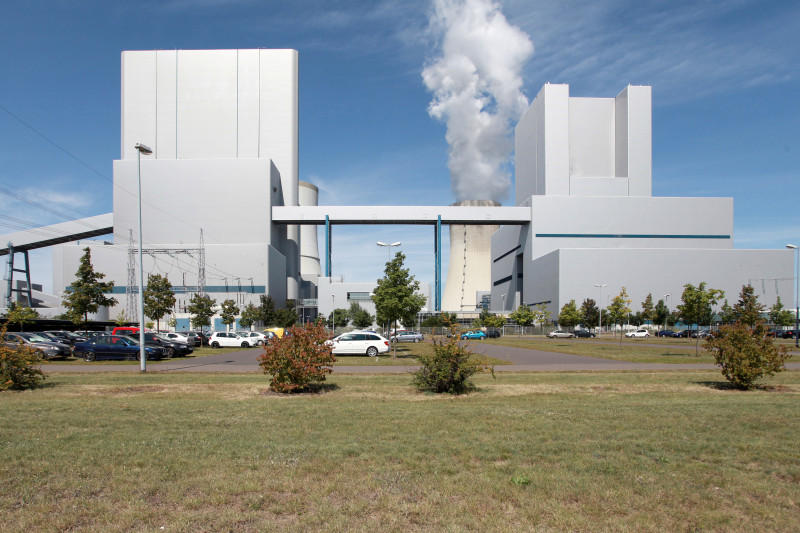
Boxberg power plant block R, 02, Vattenfall's second-largest power plant in Germany, the surrounding open-cast mines have long been important to the supply of energy in Germany, as well as to the people and the region. Year: 2012 | Place: - | Creator: Bernd Schnabel | ID: VF300015
In 2006 Vattenfall also launched an unspecified plan to build 10 TWh of renewable electricity in Sweden by 2016, 8 TWh of which would be wind power. The cost was estimated at SEK 40 billion. An agreement was reached with Sveaskog the following year to construct 4 TWh. However, it was becoming increasingly evident that the wind power market in Sweden was not particularly profitable compared with other markets. In 2012 Vattenfall deemed the Swedish market for renewables to be insufficiently profitable.
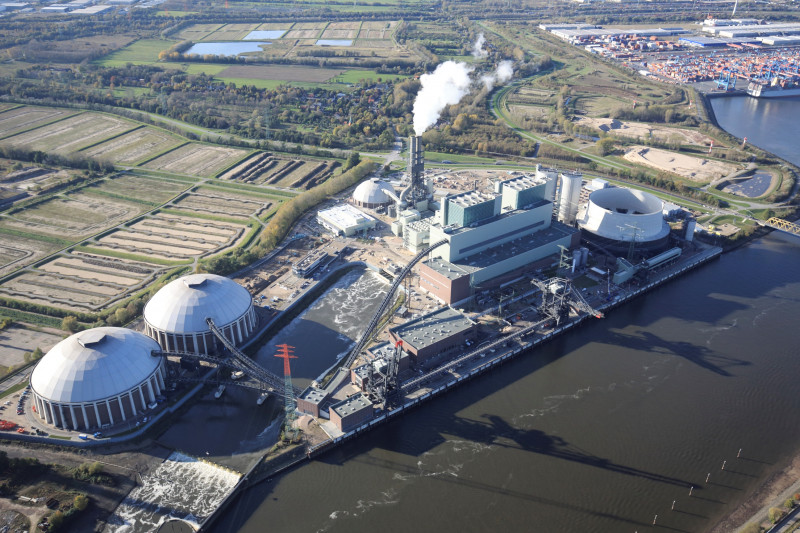
View of Moorburg from Southern Elbe. The Moorburg plant, has a capacity of 1640 MW and generates approximately 11 terawatt hours (TWh), which equates to around 90 per cent of the electricity demand of the city of Hamburg. Year: 2014 | Place: Hamburg | Creator: Bengt Lange | ID: VF300020
Establishment in the UK brings with it leadership role within offshore wind power
However, there were other countries with other conditions. Denmark had long been investing in wind energy and with Vattenfall's Danish acquisitions it was possible to incorporate 300 MW of wind power into the output for 2006. In March 2007, the EU decided as one of its three '20-20-20 targets' that the proportion of renewable energy should amount to 20 per cent by 2020. The overall target at EU level was allocated as a binding objective for each country. A large portion fell on the UK. As the country has a shortage of biofuel and limited space for onshore wind power, it was quickly concluded that offshore wind farms could be a solution, albeit an expensive one. The subsidies for prospective contractors were set accordingly and Vattenfall was now on the advance. As far back as 2008, a number of offshore wind power projects were acquired totalling more than 1,000 MW. Construction sites, including the 300 MW Thanet facility, soon got under way and as time went by were able to deliver electricity as scheduled and at the budgeted cost.

Inauguration of the Thanet offshore wind farm. Year: 2010 | Place: - | Creator: Kate Drouet | ID: VF300016
During the early 2000s the power companies enjoyed a highly favourable economic situation. Electricity prices were high and the belief was that the Emissions Trading System, ETS, for CO2 emission allowances would further increase prices and thus profits. It was in that spirit that NUON was acquired in 2009 at a price which subsequently turned out to be much too high. The acquisition can be viewed in the light of the fact that as late as 2008 Vattenfall had an ambition to acquire 10 per cent of the EU's electricity market and increase its electricity generation from 170 to 390 TWh by 2030. However, this was not to be, as profitability had now started to deteriorate and moreover the financial crisis had arrived.
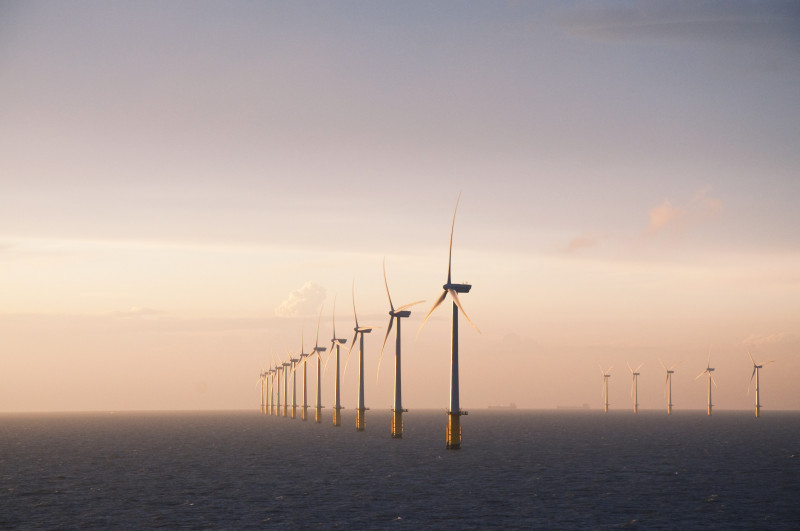
The construction of Thanet offshore wind farm was completed September 2010 and consists of 100 Vestas V90 wind turbines and has a total capacity of 300 MW. Year: 2018 | Place: - | Creator: Kate Drouet | ID: VF300017
A strategic retreat
The financial crisis of 2008 and the decrease in electricity consumption which it brought about, along with the major growth in renewable energy, resulted in forecasts of electricity prices being gradually reduced. In 2008 Vattenfall assumed that the electricity price in the Nordic region would be €55/MWh by 2020. In 2012 that figure had dropped to €45/MWh. The future no longer looked so promising. It was clear that something had to be done. In autumn 2010 Vattenfall was also given a new mandate by its owner. The company should be one of the leaders in the development towards sustainable energy production, i.e. Vattenfall was no longer to be the leading company in Sweden. Furthermore, a completely new strategy was drawn up which focused on Sweden, Germany and the Netherlands, along with wind power in the UK. The five-year investment plans were drastically cut back, from a maximum of SEK 201 billion in 2010 to 2014 to almost half in 2014 to 2018, SEK 105 billion.
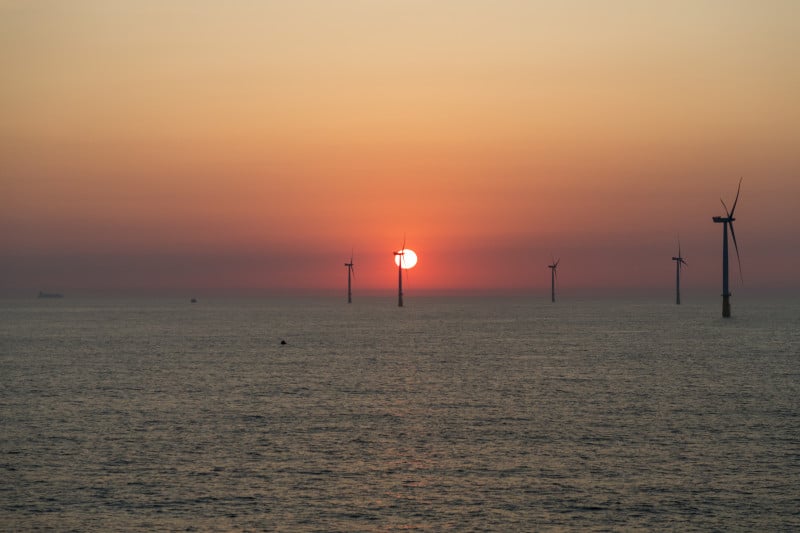
View from OAP at DanTyck offshore windfarm. Year: 2016 | Place: - | Creator: Ulrich Wirrwa | ID: VF300018
It is clear that the ambition to build more wind power had to give way to the economic realities. However, in Germany, Vattenfall nevertheless also entered into a number of major offshore projects in collaboration with Stadtwerke München; DanTysk totalling 288 MW which was approved in 2010 and Sandbank, also totalling 288 MW, the investment for which was approved in 2014.
Wind power takes over
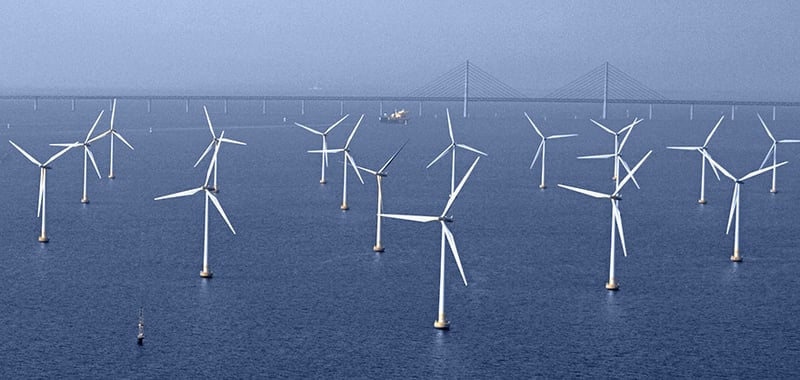
Lillgrund wind farm Year: 2018 | ID: VF300011
As the large fossil-fuelled plants, Moorburg (completed 2015), Boxberg (completed 2012), Magnum (completed 2013), Diemen (completed 2012) and others were essentially ready, it was possible for wind power to commandeer an increasing proportion of the funds for growth investments. Examples of investment decisions are Horns Rev III at 407 MW in 2016 and Kriegers Flak at 600 MW in 2017. While wind power only accounted for two per cent of growth investments in 2005, it had risen to 75 per cent in 2016. It took just over 10 years to transition from investments in fossil-based power to focusing on renewable electricity.
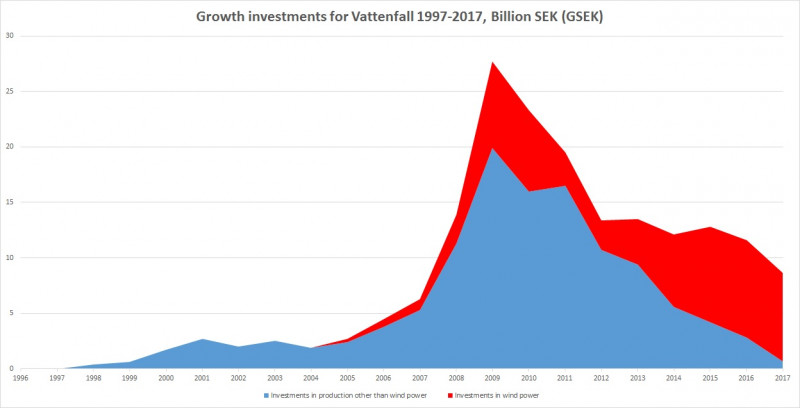
Growth investments of Vattenfall 1997-2017, Billion SEK. Year: 1997 | Place: - | Creator: Unknown | ID: VF300012
This graph show how the investments in wind power have gone from being a very modest proportion of growth investments in electricity generation to constituting the absolutely predominant proportion.
Related videos
Video player requires marketing cookies.
To view this content please click here to allow marketing cookies.
Vattenfall’s views in 2002 on new capacity. (In Swedish)
Video player requires marketing cookies.
To view this content please click here to allow marketing cookies.
Vattenfall’s views in 2002 on its role concerning the energy conversion (In Swedish)
Video player requires marketing cookies.
To view this content please click here to allow marketing cookies.

